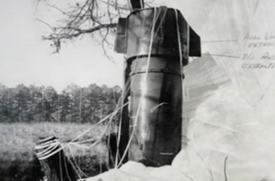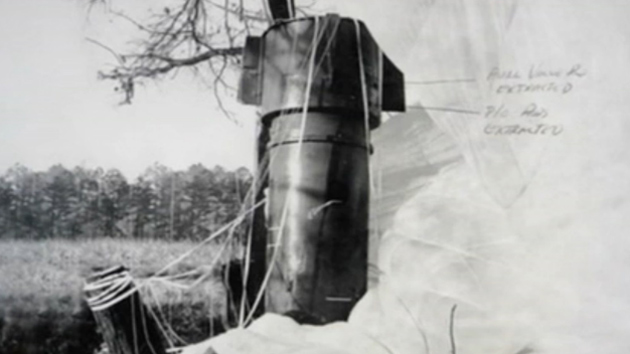
Along a lonely state highway on central Montana’s high plains, I approach what looks like a ranch entrance, complete with cattle guard. “The first ace in the hole,” reads a hand-etched cedar plank hanging from tall wooden posts. “In continuous operation for over 50 years.” I drive up the dirt road to a building surrounded by video cameras and a 10-foot-tall, barbed-wire-topped fence stenciled with a poker spade. “It is unlawful to enter this area,” notes a sign on the fence, whose small print cites the Subversive Activities Control Act of 1950, a law that once required communist organizations to register with the federal government. “Use of deadly force authorized.”
I’m snapping photos when a young airman appears. “You’re not taking pictures, are you?” he asks nervously.
“Yeah, I am,” I say. “The signs don’t say that I can’t.”
“Well, we might have to confiscate your phone.”
Maybe he should. We’re steps away from the 10th Missile Squadron Alpha Missile Alert Facility, an underground bunker capable of launching several dozen nuclear-tipped Minuteman III intercontinental ballistic missiles (ICBMs), with a combined destructive force 1,000 times that of the Hiroshima bomb.
Another airman comes out of the ranch house and asks for my driver’s license. He’s followed by an older guy clad in sneakers, maroon gym shorts, and an air of authority. “I’m not here to cause trouble,” I say, picturing myself in a brig somewhere.
“Just you being here taking photos is causing trouble,” he snaps.
An alarm starts blaring from inside the building. One airman turns to the other. “Hey, there’s something going off in there.”
Six hours earlier, I was driving through Great Falls with a former captain in the Air Force’s 341st Missile Wing. Aaron, as I’ll call him, had recently completed a four-year stint at the Alpha facility. Had President Obama ordered an attack with ICBMs, Aaron could have received a coded message, authenticated it, and been expected to turn a launch key.
We kept passing unmarked blue pickup trucks with large tool chests—missile maintenance guys. The Air Force doesn’t like to draw attention to the 150 silos dotting the surrounding countryside, and neither does Great Falls. With about 4,000 residents and civilian workers and a $219 million annual payroll, Malmstrom Air Force Base drives the local economy, but you won’t see any missile-themed bars or restaurants. “We get some people that have no idea that there’s even an Air Force base here,” one active-duty missileer told me.
It’s not just Great Falls practicing selective amnesia. The days of duck-and-cover drills, fallout shelters, and No Nukes protests are fading memories—nowhere more so than in the defense establishment. At a July 2013 forum in Washington, DC, Lt. General James Kowalski, who commands all of the Air Force’s nuclear weapons, said a Russian nuclear attack on the United States was such “a remote possibility” that it was “hardly worth discussing.”
But then Kowalski sounded a disconcerting note that has a growing number of nuclear experts worried. The real nuclear threat for America today, he said, “is an accident. The greatest risk to my force is doing something stupid.”
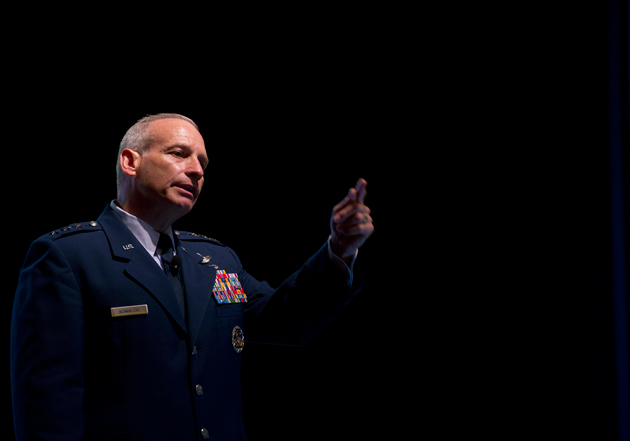
“You can’t screw up once—and that’s the unique danger of these machines,” points out investigative journalist Eric Schlosser, whose recent book, Command and Control, details the Air Force’s stunning secret history of nuclear near-misses, from the accidental release of a hydrogen bomb that would have devastated North Carolina to a Carter-era computer glitch that falsely indicated a shower of incoming Soviet nukes. “In this business, you need a perfect safety record.”
And a perfect record, in a homeland arsenal made up of hundreds of missiles and countless electronic and mechanical systems that have to operate flawlessly—to say nothing of the men and women at the controls—is a very hard thing to achieve. Especially when the rest of the nation seems to have forgotten about the whole thing. “The Air Force has not kept its ICBMs manned or maintained properly,” says Bruce Blair, a former missileer and cofounder of the anti-nuclear group Global Zero. Nuclear bases that were once the military’s crown jewels are now “little orphanages that get scraps for dinner,” he says. And morale is abysmal.
Blair’s organization wants to eliminate nukes, but he argues that while we still have them, it’s imperative that we invest in maintenance, training, and personnel to avoid catastrophe: An accident resulting from human error, he says, may be actually more likely today because the weapons are so unlikely to be used. Without the urgent sense of purpose the Cold War provided, the young men (and a handful of women) who work with the world’s most dangerous weapons are left logging their 24-hour shifts under subpar conditions—with all the dangers that follow.
In August 2013, Air Force commanders investigated two officers in the ICBM program suspected of using ecstasy and amphetamines. A search of the officers’ phones revealed more trouble: They and other missileers were sharing answers for the required monthly exams that test their knowledge of things like security procedures and the proper handling of classified launch codes. Ultimately, 98 missileers were implicated for cheating or failure to report it. Nine officers were stripped of their commands, and Colonel Robert Stanley, the commander of Malmstrom’s missile wing, resigned.
The Air Force claimed the cheating only went as far back as November 2011, but three former missileers told me it was the norm at Malmstrom when they arrived there back in 2007, and that the practice was well established. (Blair told me that cheating was even common when he served at Malmstrom in the mid-1970s.) Missileers would check each other’s tests before turning them in and share codes indicating the correct proportion of multiple-choice answers on a given exam. If the nuclear program’s top brass, who all began their careers as missileers, weren’t aware of it, the men suggested, then they were willfully looking the other way. “You know in Casablanca, when that inspector was ‘absolutely shocked’ that there was gambling at Rick’s? It’s that,” one recently retired missileer told me. “Everybody has cheated on those tests.”
Cheating is just one symptom of what Lt. Colonel Jay Folds, then the commander of the nuclear missile wing at North Dakota’s Minot Air Force Base, called “rot” in the atomic force. Last November, Associated Press reporter Robert Burns obtained a RAND study commissioned by the Air Force. It concluded that the typical launch officer was exhausted, cynical, and distracted on the job. ICBM airmen also had high rates of sexual assault, suicide, and spousal and child abuse, and more than double the rates of courts-martial than Air Force personnel as a whole.
The morale problems were well known to Michael Carey, the two-star general who led the program at the time the cheating was revealed. Indeed, he pointed them out to other Americans during an official military cooperation trip to Moscow, before spending the rest of his three-day visit on a drunken bender, repeatedly insulting his Russian military hosts and partying into the wee hours with “suspect” foreign women, according to the Air Force’s inspector general. He later confessed to chatting for most of a night with the hotel’s cigar sales lady, who was asking questions “about physics and optics”—and thinking to himself: “Dude, this doesn’t normally happen.” Carey was stripped of his command in October 2013.
The embarrassments just keep coming. Last week, the Air Force fired two more nuclear commanders, including Col. Carl Jones, the No. 2 officer in the 90th Missile Wing at Wyoming’s Warren Air Force Base, and disciplined a third, for a variety of leadership failures, including the maltreatment of subordinates. In one instance, two missileers were sent to the hospital after exposure to noxious fumes at a control center—they had remained on duty for fear of retaliation by their commander, Lt. Col. Jimmy “Keith” Brown. This week, the Pentagon is expected to release a comprehensive review of the nuclear program that details “serious problems that must be addressed urgently.”
Stung by the recent bad press, the Air Force has announced pay raises, changes to the proficiency tests, and nearly $400 million in additional spending to increase staffing and update equipment. In the long term, Congress and the administration are debating a trillion-dollar suite of upgrades to the nuclear program, which could include replacing the existing ICBMs and warheads with higher-tech versions.
But outside experts say none of the changes will address the core of the problem: obsolescence. “There is a morale issue,” says Hans Kristensen, who directs the Federation of American Scientists’ Nuclear Information Project, “that comes down to the fundamental question: How is the ICBM force essential? It’s hard to find that [answer] if you sit in the hole out there. Their buddies from the B-52s and B-2s tell them all sorts of exciting stories about doing real things in Afghanistan and Iraq. They end up feeling superfluous.”
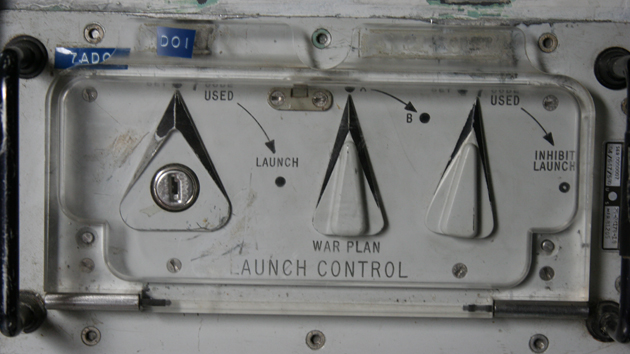
Indeed, on my first night in town, over beer and bison burgers, Aaron had introduced me to “Brent,” another recently former missileer who looks more like a surfer now that his military crew cut is all grown out. Brent lost faith in his leaders early on, he told me, when he saw the way they tolerated, if not encouraged, a culture of cheating. He’d resisted the impulse, he said, and his imperfect test scores disqualified him for promotions. But the worst part of the gig, the guys agreed, might be the stultifying tedium of being stuck in a tiny room all day and night waiting for an order you knew would never come. “Any TV marathon you can stumble upon is good,” Brent said. “Even if it’s something you hate. It’s just that ability to zone out and lose time.”
Aaron chimed in: “I would sit on alert with CNN up and just hit refresh, hoping to God something would happen in the world. I’m just like, ‘Please, something change. Oh my God! I am so tired and I am so bored.'”
“You get into that funk,” he went on. “You just want to sit there and hope to God that this next 10 hours disappears. Because your partner goes to bed and you, the console, and the missiles are by yourself for 10 hours. My favorite time is when the TV broke! You’ve never seen more innovative people on Earth. They were taking the back off the TV, splitting wires, sticking paper clips in it. I came out and go, ‘What happened?’ and he goes, ‘The fucking TV broke and I fixed it! I spent an hour and a half, but I fixed it.'”
This visit marks the first time Aaron has been in Great Falls since leaving the Air Force, and he still hasn’t come to terms with spending five years of his life on a mission he’s not sure he believes in. As we walk up to the Malmstrom base museum one morning, he starts to sweat. In the visitor center, he glues himself to a sofa as I hand my ID to a young airman. “Do you want to go inside?” I ask him.
“No, not really,” he says, and then, once we’re back in the car, explains sheepishly, “It’s just weird being on base.”
Aaron took his first flight, on a puddle jumper, around age 10. An uncle who worked as a pilot later bought him a flying lesson, and Aaron never looked back. He applied and was accepted to the Air Force Academy. But during his senior year, the Air Force ended a waiver program that allowed cadets with imperfect vision—including Aaron—to earn their wings, so after graduation he grudgingly settled for a position at Malmstrom. He was hardly alone in his lack of enthusiasm: According to one study, less than one-third of missileers ever wanted that job. When Aaron hit on women in bars in Great Falls, he would sometimes say he was a wind turbine technician.
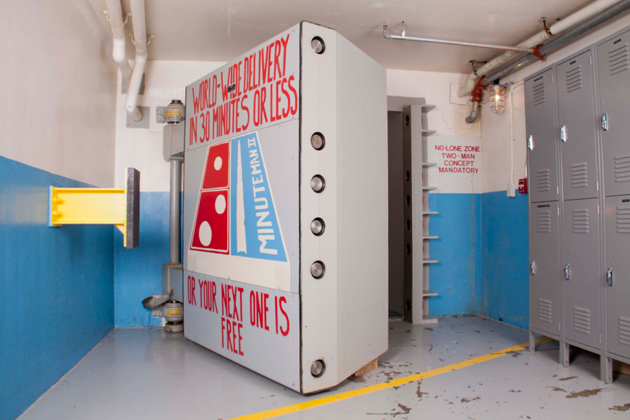
On a typical workday, he would arrive at Malmstrom by 7 a.m. and go through the first of some 50 daily checklists, an inspection of his Air Force-issued Ford Taurus X. For the next few hours, he would get briefings, study checklist changes, or complete exams before hitting the road with another missileer—each team includes a commander and a deputy—and sometimes a facilities manager and a chef, since you can’t exactly summon Domino’s to such a remote site.
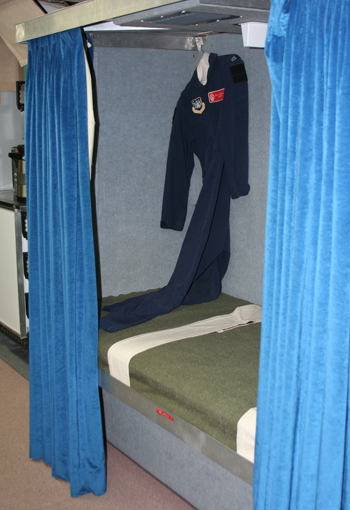
Once he arrived at the launch facility, Aaron would begin a 24-hour shift, known as an “alert,” by going 60 feet underground in an elevator and passing through a four-and-a-half-foot-thick blast door. The control center, about the size of an RV trailer, hangs inside a concrete capsule from pneumatic cylinders designed to help it ride out shock waves from a nuclear blast. Each unit controls 10 Minuteman III missiles but can launch up to 50 should the need arise. The temperature is a constant 68 degrees and the tiny bathroom contains a “prison toilet.” While one missileer monitors the control panels, his partner sleeps in a bed opposite, hence the unofficial motto: “Death wears bunny slippers.”
Any suggestion of restfulness is misleading, however. The missile wing slogan “perfection is the standard” extends to the smallest of tasks—like the chef ensuring that the salad dressing hasn’t expired. Botching a checklist would earn you a write-up, and could get you pulled from duty. Repeat mistakes could seriously harm your prospects for promotion. In Aaron’s view, the job was like a “Pavlovian experiment,” with some kind of buzzer going off, it seemed, every 15 minutes. Facing the threat of reprisal for the smallest mistakes, he never got much sleep.
It turned out that Aaron had joined the nuclear program at a particularly bad time. In June 2006, the top-secret nose cone fuse assemblies of four Minuteman III missiles were accidentally shipped from Hill Air Force Base in Utah to Taiwan, which had requested helicopter batteries; the boxes sat for nearly two years before the Air Force, prompted by Taiwanese officials, finally acknowledged its error.
The next year, just four months after Aaron started at Malmstrom, six hydrogen bombs from Minot went missing for a day and a half after a crew mistakenly loaded them onto a plane and flew them across the country. “It was an incredibly serious security lapse,” Schlosser says. “The fact that nobody was asked to sign for the weapons when they were removed from the bunker, the fact that nobody in the loading crew or on the airplane even knew that the plane was carrying nuclear weapons, is just remarkable.” A string of investigations concluded that the nuclear corps had lost its “zero defect” culture. In response, the Air Force launched a program to “sustain, modernize, and recapitalize its nuclear capability.” What that meant in practice, Aaron says, was punishing the rank and file for past mistakes while the colonels swept the bigger problems under the rug.
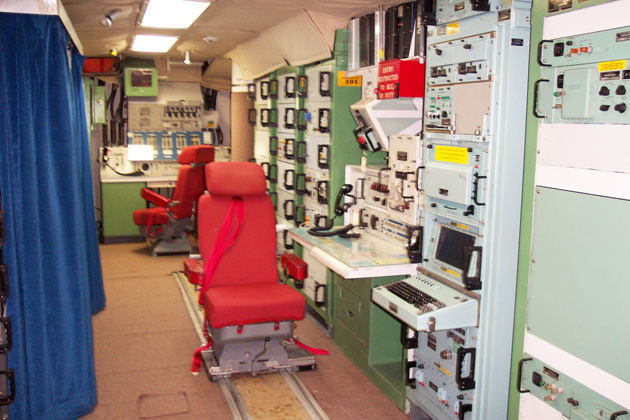
A few months into the modernization program, sewer pipes in two Malmstrom launch facilities ruptured and a deep stew of human waste lingered at the bottom of the capsules. Despite the intolerable stench, the colonel in charge refused to take the units offline for repair. The men were instead ordered to defecate in a cardboard box lined with a plastic bag, but since nobody wanted to carry the box upstairs when it got full, the missileers began relieving themselves from a gangplank directly into the bottom of the capsule. This went on for four or five months. “You are sitting there being told you are operating the most vital system to the defense of the country,” says a former missileer who worked in one of the affected capsules, “and then you are shitting and pissing in a bag. It just caused a corrosive lack of faith in our leaders.”
Since Aaron can’t bring himself to set foot on base, we decide to visit Belt, a quaint former mining town nestled in a creek valley. We drive through the old brick downtown, past dog walkers and kids on bikes. “Slow down a little bit,” Aaron says, just after we pass the last row of houses. “To the left is a nuclear weapon.”
Behind a chain-link fence, I spot the 110-ton silo door, which would be sent flying over our heads in a launch scenario. An adversary might try to nuke this missile before it could be used—which is why the Air Force has them scattered over five states. But the neighbors have more to worry about than our enemies abroad.
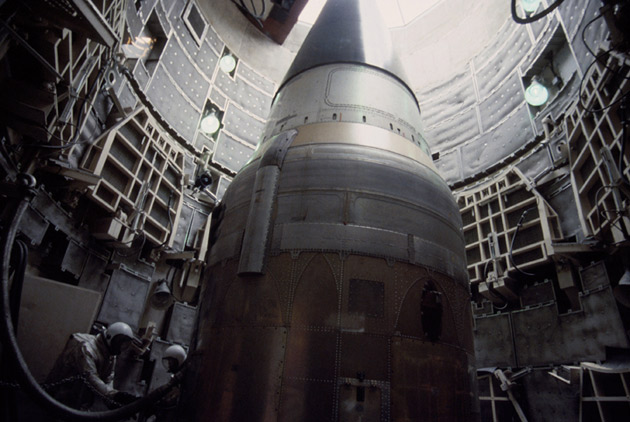
On September 18, 1980, an airman conducting maintenance on a Titan II missile in a silo near Damascus, Arkansas, used an unauthorized socket wrench to unscrew a cap near the top of the missile. The nine-pound socket came loose, plunged 70 feet, and punched a hole in the fuel tank. Nine hours later, the missile exploded, killing one person, injuring 21 others, and scattering debris over a half-mile radius. The warhead flew 200 yards and landed, thankfully without detonating, in a roadside ditch. It was the largest weapon ever mounted on an ICBM, a nine-megaton hydrogen bomb with more explosive potential than all of WWII’s bombs—including the nukes—combined.
The Damascus incident, which provided the central narrative for Schlosser’s book, illustrated a problem that has plagued America’s nuclear program since its inception: Nukes are designed, operated, and maintained by people—and people invariably make mistakes. Between 2008 and 2014, the Air Force reported 1,430 “dull sword” incidents: relatively minor deficiencies such as an unauthorized entry into a launch capsule or a security team failing to respond to alarms.
The Air Force has been less forthcoming, however, about the more serious mishaps, known as “broken arrows” or “bent spears,” which are often kept classified. But “you don’t have to be an industrial expert to know that accidents happen when people are careless, and people are careless when they don’t care about their jobs,” says Joseph Cirincione, president of the Ploughshares Fund, a foundation focused on nuclear weapon policy. (Ploughshares has provided funding for Mother Jones‘ national-security reporting.)
Bob Peurifoy, who introduced new nuclear safety features as a director of weapon development and VP at Sandia National Laboratories from 1973 to 1991, told me that built-in missile safeguards have improved to the point where the risk of an accidental detonation of a Minuteman-mounted nuke is “vanishingly small.” But, he adds, “I will not say zero. I know how to get to zero: Don’t put the weapon together” until the moment you need to use it. Peurifoy also believes that the United States needs to step back further from its Cold War-era posture. “In my opinion,” he says, the missiles’ pinpoint accuracy “is an example of a technology driving a reckless policy, a form of insanity” that encourages both the United States and Russia to continue targeting each other’s silos and launch the missiles “on warning” of an incoming barrage. False alarms have nearly triggered accidental war on more than one occasion, Peurifoy notes, the most recent (that we know about) coming during the 1990s. “It’s an accident waiting to happen.”
Two days later, I return to the base museum, where I spot a sign much like the one I’d seen back on the highway. JFK, legend has it, referred to the Alpha fleet as his “ace in the hole” because it allowed him to stare down the Soviets during the Cuban Missile Crisis. But museum curator Curt Shannon, a retired Air Force “ammo puke” whose job entailed loading nuclear bombs onto planes, assures me the legend is bogus—he personally unearthed a Boeing marketing brochure predating the Missile Crisis that read: “Minuteman: Montana and America’s Ace in the Hole.” The Kennedy story, Shannon suggests, was concocted by the defense contractor to sell more missiles.
We watch a Minuteman III promotional video that is shown to all museum visitors. With a burst of flame, the missile blasts skyward, accompanied by triumphal music. It burns through two stages before reaching outer space, where, with video-game-style sound effects, a spinning warhead pivots and falls earthward, ripping through the atmosphere at 15,000 mph. In the end, it lands harmlessly in the ocean. “Of course, if it hits the water, somebody screwed up,” Shannon jokes as he resets the DVD player.
What the video leaves out is that if we ever do deploy a nuke, it probably won’t be an ICBM, because Russia or China might interpret the launch as an attack even if we were actually aiming for, say, Iran or North Korea. Instead, most defense experts believe that in almost all foreseeable scenarios we’d strike with a bomber or a submarine, deployed from nearby shores or military bases.
Why, then, does America bother with land-based missiles? The Air Force argues that it’s basically a show of strength, since an enemy would have to take out every silo to disarm us. But that logic no longer seems compelling, even to some high-profile former military leaders. Retired General James Cartwright, a former vice chairman of the Joint Chiefs of Staff, said at a 2012 Senate hearing that our nuclear stockpile could be safely reduced from 4,800 warheads to 900 mounted in bombers and submarines, with ICBMs eliminated entirely.
Ditching the ICBMs would save taxpayers $14 billion over the next 10 years, but not everyone’s a fan of the idea: Senators from states where the missiles are based and tested have formed an ICBM caucus that isn’t shy to throw its weight around. As a condition for confirming Rose Gottemoeller, Obama’s recent pick for undersecretary of state for arms control and international security, the caucus insisted that the Pentagon maintain all 454 ICBM silos, even through it is trimming the number of missiles to 400. (Yes, we will man and maintain 54 empty silos.)
At the museum, I meet “Frank,” an active-duty missileer and museum volunteer who says he was assigned to the space program before being transferred to missiles at the last minute because they needed workers. When he started at Malmstrom three years ago, his superiors told him not to complain until he gained some experience. Now that he has, he’s dying to get out. He nods toward a woman who is milling through the exhibits. “This lady works for Boeing, and she’s actually a recruiter,” he confides. “I might talk to her afterwards. The lifestyle is not quite what I wanted.”
Is it really such a great idea, I ask him, to have a bunch of disillusioned guys babysitting such terrifying weapons?
“You’re hitting a topic that has been talked about and bitched about for a looong time,” Frank says with a smile. “Do something for us. Please.”

